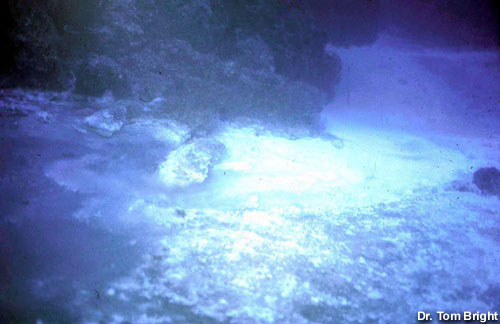|
The Flower Garden corals grow on top
of geological structures called salt domes, or salt diapers.
Millions of years ago, when the Gulf of Mexico was very
shallow, evaporation caused the deposit of thick layers of
salt onto the sea floor. Over time, runoff from the rivers
of the North American continent covered the salt with huge
amounts of silt and mud. The salt, being much less dense
than this mud layer, was forced upwards by the pressure of
the weight on top of it. In weak spots, the salt was able to
push its way through the mud layers, and in some areas, make
its way to the surface - causing an area of high salinity as
the salt is dissolved into surrounding waters. One such area
is located at the East Bank of the Flower Gardens - at
around 240' - the brine seep. An area of the bank, called
the graben, is a depressed area about a mile across, caused
by the loss of salt from the salt dome. Associated with this
brine seep is an underwater brine waterfall, brine lake, and
brine river. As you can see in this image, the brine river
is visibly different from the surrounding water. (photo: Dr.
Tom Bright)
Download/Display 300
dpi image
|


